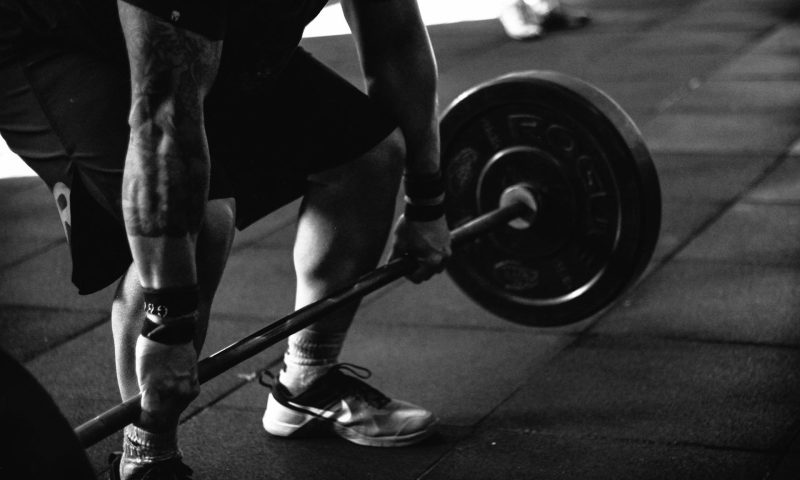Many movie roles require countless hours of dedicated training to achieve peak physical shape for the character. Sometimes actors only have weeks to get in shape. Acting out those action-packed scenes requires an impressive degree of physical fitness and the right coach to guide you along the way. That’s where experienced fitness trainers like Jason Walsh come in to help sculpt movie-ready physiques.
We caught up with Jason Walsh to learn more. He doesn’t just coach workouts and motivate some of Hollywood’s leading movie actors like Bradley Cooper, Jake Gyllenhaal, and Pedro Pascal; he provides well-rounded support to boost wellness and fitness using exercise, protein, nutrition, and more.
The A-list routine

From protein to red carpets and from the gym to the movie set, Walsh is the knowledgeable right-hand man when the stars need to level up their fitness and prep for the silver screen. Walsh has over two decades of experience, and he’s developed the A-list training routine that combines molecular nutrition and movement for the best possible results. He’s also the co-founder of RISE311 — a high-end plant-based protein powder that’s helped power leading actors.
Expert fitness advice from Hollywood trainer Jason Walsh

The Manual: When did you first become interested in fitness? Could you share more about your personal fitness journey?
Jason Walsh: It began with movement. I was a kid who enjoyed sports, physicality, and the way the body functioned. It was in college, studying exercise science, that I determined the depth. I didn’t just want to know how to train; I wanted to know why it worked, and that was when it became a lifelong pursuit: to help individuals move better, feel better, and perform at their best. That sort of curiosity, combined with discipline, is what fuels me today.
TM: You’ve helped Hollywood actors achieve peak physical condition and prepare for leading action movie roles, with many going on to perform their own stunts. How does training for a leading action movie role differ from typical everyday training? For example, when Jake Gyllenhaal prepared for Road House, he trained differently from how someone else would work out when they just want to feel healthier and get in shape. What are some of the more intense measures actors take?
Jason Walsh: The stakes are higher. When you’re getting someone like Jake Gyllenhaal ready for “Road House,” every aspect of the system must serve the need — joint integrity, breath patterns, nervous system flexibility, and, yes, physical appearance. For actors, the craft is the game. We speed up what would take years to learn through training, safely, efficiently, and sustainably. It’s an intentional change, not pandemonium.

TM: Could you share more about the A-list routine and how you help actors like Bradley Cooper and Pedro Pascal level up their fitness and performance? Could you give our readers an idea of what the first introductory training session looks like and the training sessions that follow?
Jason Walsh: Session one is measurement. I need someone to move, breathe, stabilize. Back to basics before we go up again. Then we add strength, conditioning, and mobility — each piece timed to the movie production time. With Bradley or Pedro, we’re constantly moving. Between travel, night shooting, and exhaustion, everything’s in the balance. What you see on the screen is the end result of a bespoke, hand-crafted process constructed around real performance.
TM: Why is stretching an important part of any workout routine?
Jason Walsh: Stretching is about control, not flexibility. It sets the body up for action, helps blood flow, and reduces the risk of injury, but we do it as dynamic prep, not static hold. It’s a ceremony, and it’s how we get the system ready to perform and recover after the session.
Incorporating progressive overload and bodyweight moves

TM: What are the benefits of using bodyweight exercises like squats and lunges?
Jason Walsh: Bodyweight exercises are a foundation because they instruct you on how to move around in a space with control and stability. Squats, lunges, and push-ups build strength and coordination in patterns you access daily. These exercises are scalable, efficient, and when performed correctly, they’re an entry to a life of performance.
TM: Do you feel it’s important to switch up a workout routine for variety? What about incorporating progressive overload, where you increase the weights, reps, or sets over time?
Jason Walsh: Progressive overload is a foundation of improvement, both neurologically and physically, but it needs to be done on purpose. We mix things such as tempo, rest, and load according to an individual’s needs. Variety serves there, not for enjoyment, but for advancement. Adaptation occurs when we stress the body enough to create, but not enough to cause dysfunction.
The importance of protein

TM: As a fitness expert, what’s the importance of protein in general and for building muscle?
Jason Walsh: Protein is crucial for assisting in recovery, muscle repair, hormone regulation, and even the immune response. Particularly after training, when the body can make use of protein. But it’s not all about quantity; it’s about having the right mix of amino acids at the right time. That’s where formulation comes into play.
TM: What are your preferred protein sources?
Jason Walsh: I alternate between quality animal proteins and vegetables, depending on the individual and use. Most important is the amino acid profile and how the body absorbs it. That’s one reason we created RISE311 to make a plant-based alternative that works and feels as good as all that other fluff, without compromise.
TM: Could you share more about the RISE311 plant-based supplement? How did you get started with RISE311?
Jason Walsh: RISE311 was born out of necessity. I needed a protein I could rely on that was clean, efficient, and optimized for performance, but all of them were designed for mass-market consumption, not for people’s specific needs. So we recruited up scientists, batch-tested them, and developed one that’s optimized for high-level performance. It’s plant-based, but that’s not the tale — the performance is.

TM: Why is RISE311 a good choice for those who have issues digesting whey?
Jason Walsh: Most individuals don’t know that whey is the villain behind their bloating or sluggishness. RISE311 is easy on the stomach and consists of plant-based nutrients that are gentle, clean, and easily absorbed. You sense it the very first time you take it. There’s no weight and no crash, just support where your body needs it most.
TM: When is the best time to take protein supplements?
Jason Walsh: Timing is up to your goal. After a workout is an excellent window because you’ve just damaged the muscle, and your body is primed to uptake and utilize those amino acids. I also use it for fuel between meals or in the morning, which is a great time to kickstart the body’s systems and mTOR pathway after a full night’s sleep. Consistency is better than perfection. Add it to your routine, and your body will appreciate it.




